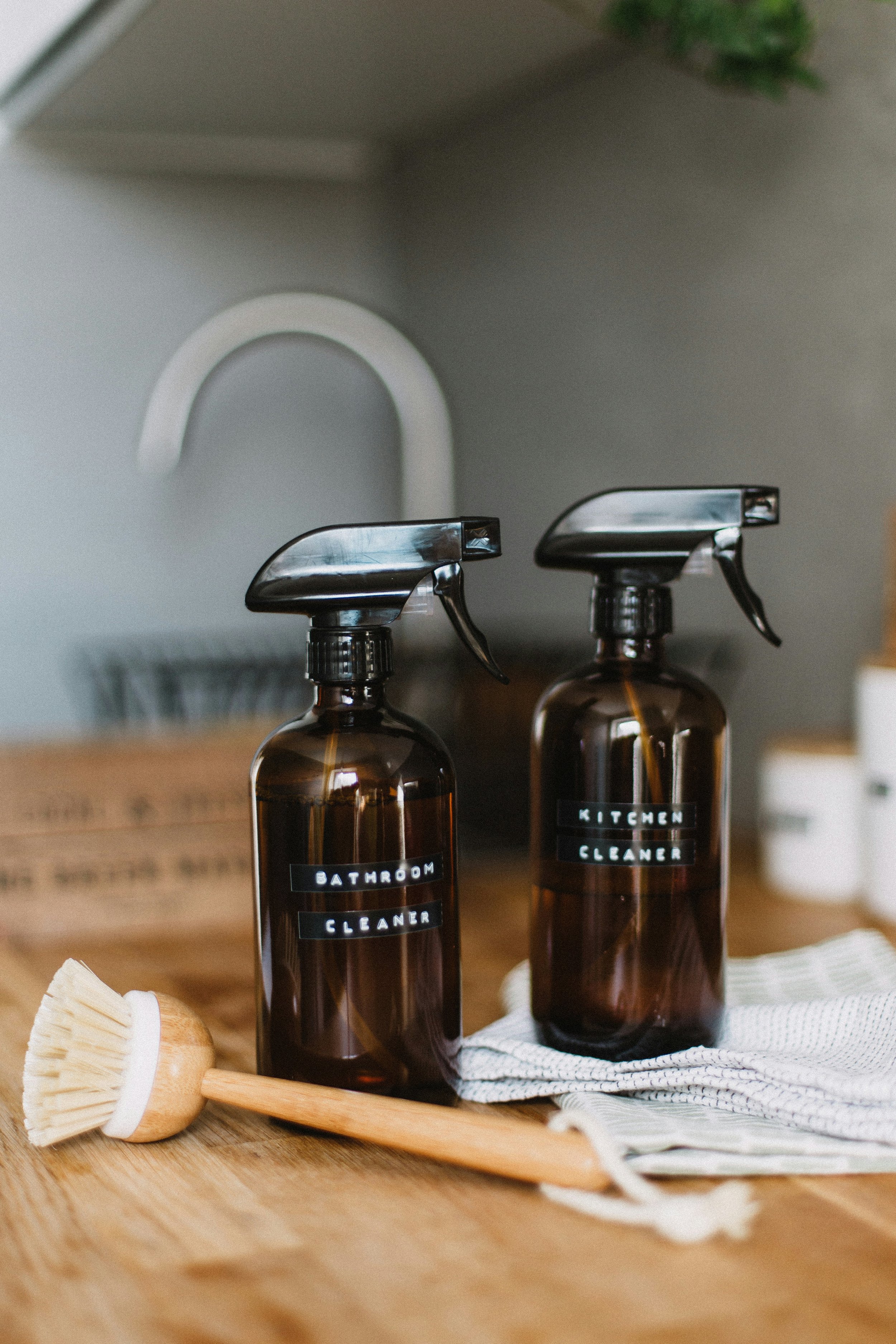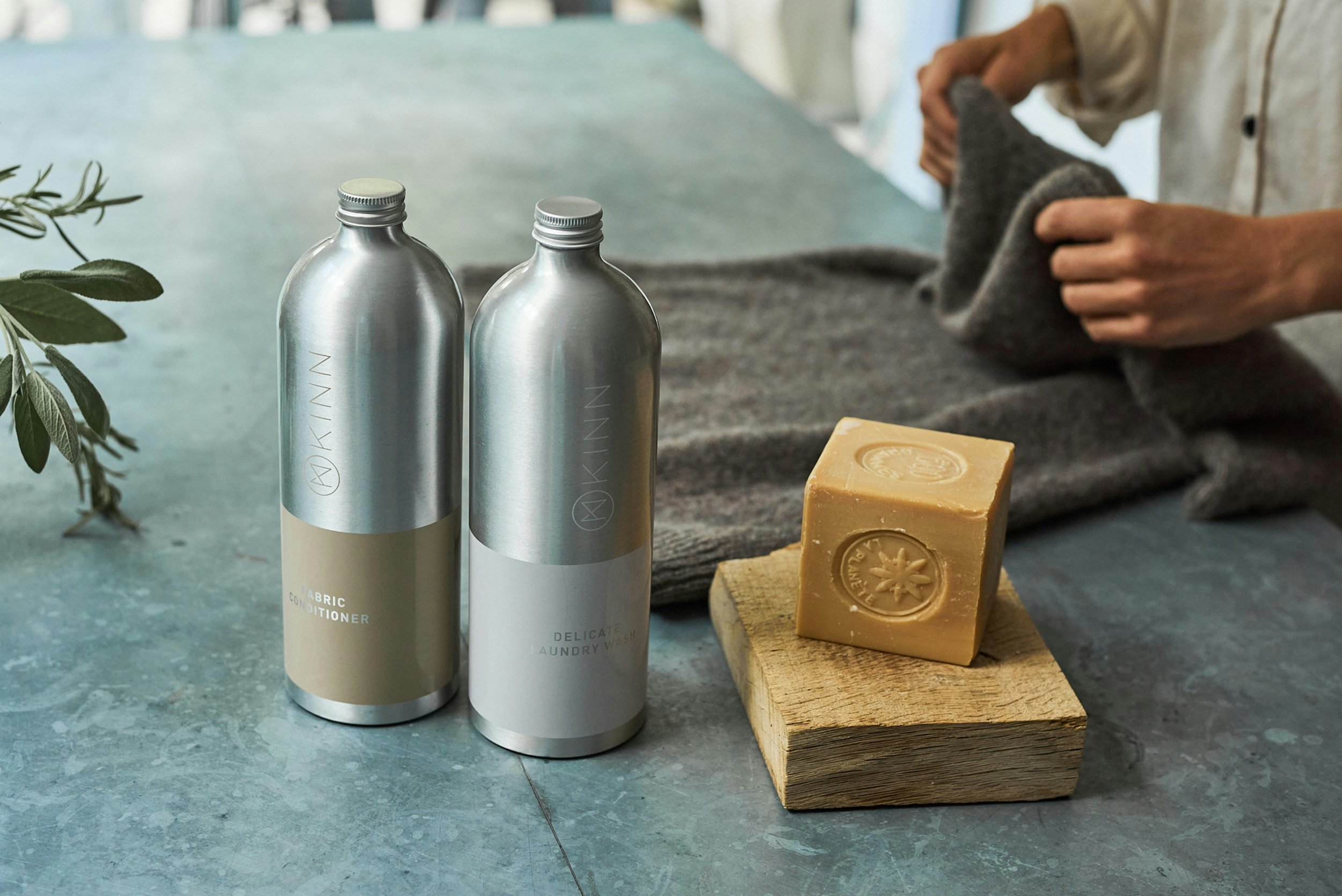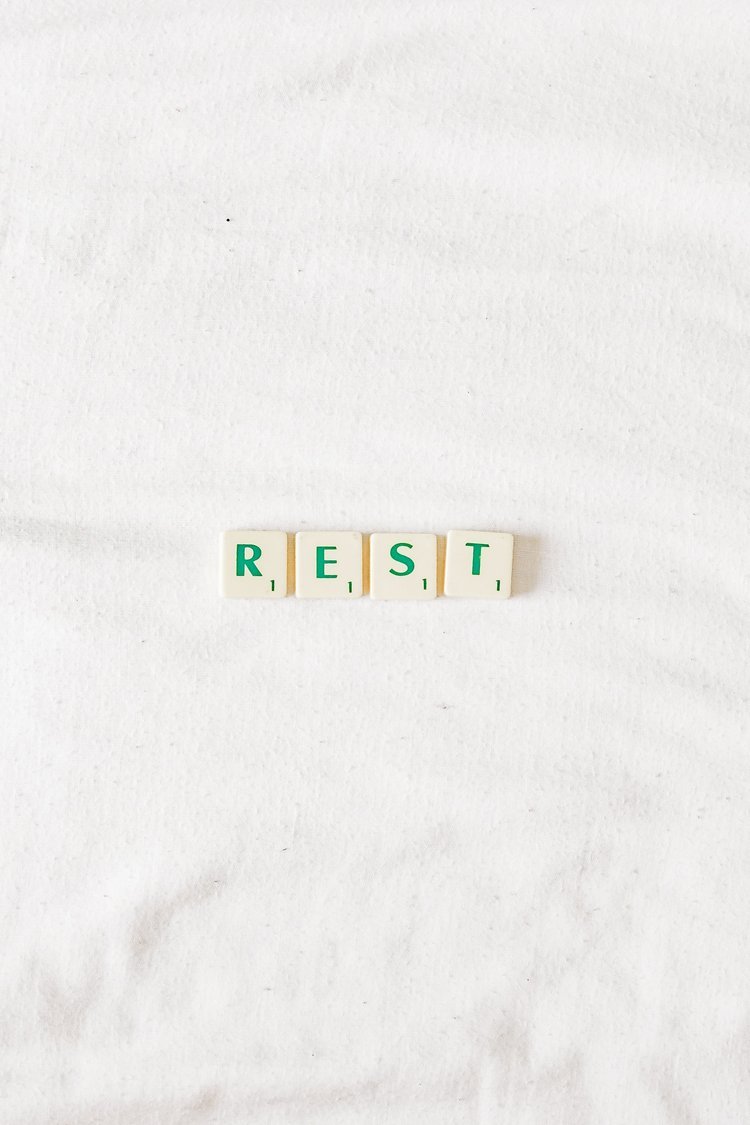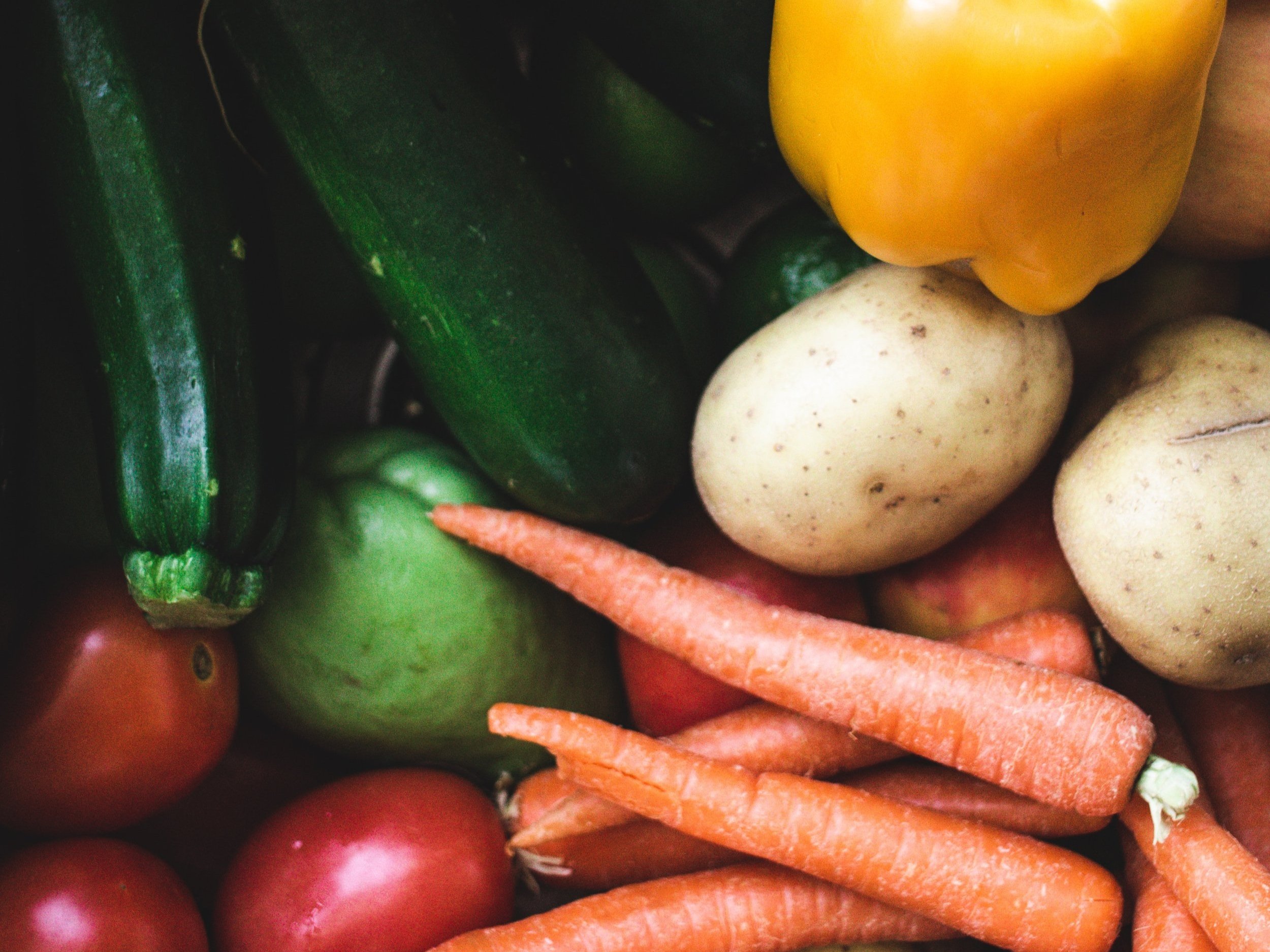How to Create a Sustainable Beauty Routine
In a world where beauty trends change rapidly, it’s easy to accumulate products that harm both the environment and our skin. But beauty doesn’t have to come at the cost of sustainability.
By making mindful choices, we can build a beauty routine that’s both eco-friendly and effective. Not sure how sustainable your beauty products are? Try our free quiz!
Here’s how to embrace a sustainable beauty routine without compromising on quality or results.
Photo by Kalos Skincare on Unsplash
1. Choose Sustainable and Ethical Brands
The easiest way to make your beauty routine greener is by supporting brands that prioritise sustainability. Look for companies that:
• Use natural, organic, or upcycled ingredients (COSMOS*)
• Offer refillable or minimal packaging.
• Commit to cruelty-free and vegan formulas (Ve or Leaping Bunny)
• Support ethical sourcing and fair-trade practices.
• Are B Corps
*COMOS = Cosmetic Organic and Natural Standard
Look out for small local sustainable brands at Makers’ Markets and indie makers’ shops.
Photo by Viva Luna Studios on Unsplash
These well-established companies are all UK-based
• B- Corp, The Body Shop is well-known for its affordable eco-friendly beauty products. It uses 100% recycled plastic in many of its products, is committed to Fair Trade and offers a recycling program in stores.
• Lush is famous for its fresh, handmade cosmetics. Using minimal packaging, they encourage customers to return containers for recycling. Their products are often vegan and cruelty-free.
• Neal's Yard Remedies emphasizes organic and natural ingredients. They use recyclable packaging and have a strong commitment to sustainability and ethical sourcing.
• Rituals focuses on creating luxurious products inspired by ancient traditions. They are committed to sustainable practices and use recyclable materials in their packaging.
• Green People specialises in organic skincare and beauty products prioritising natural ingredients and eco-friendly packaging. Certified cruelty-free, they offer many vegan products.
• Wild makes refillable deodorants that use sustainable materials. The brand emphasizes reducing plastic waste and offers a range of natural, vegan options.
• Flora & Curl specialises in natural hair care products for curly hair. They use organic ingredients and eco-friendly packaging, focusing on sustainability and ethical sourcing.
• Evolve Beauty offers a range of natural and organic skincare products made in small batches in the UK. They use sustainable packaging and focus on eco-friendly practices throughout their production process.
Photo by Eir Health on Unsplash
2. Simplify Your Beauty Routine
Less is more when it comes to sustainability. Instead of multiple using products, opt for multi-purpose beauty essentials like:
• A tinted moisturiser with SPF—hydrates, protects, and evens out skin tone.
• Multipurpose balms—great for lips, cheeks, and cuticles.
• Cleansing oils—remove makeup and cleanse skin in one step.
Photo by mahdi chaghari on Unsplash
3. Switch to Plastic-Free & Refillable Packaging
The beauty industry generates 120 billion units of plastic waste annually, most of which isn’t recyclable. Opt for:
• Glass, metal, or bamboo packaging instead of plastic.
• Refillable beauty products, such as shampoos, foundations, and perfumes.
• Solid beauty bars (shampoo, conditioner, and cleanser) to cut down on single-use bottles.
Many sustainable brands including Lush, Neal’s Yard, Beauty Kitchen and Evolve Organic Beauty offer postal refill services, making it even easier to reduce packaging waste.
Photo by Towfiqu barbhuiya on Unsplash
4. DIY Your Beauty Products
Making your own beauty products reduces waste and ensures clean, natural ingredients. Simple DIY ideas include:
• Face mask: Mix oats, honey, and yogurt for a soothing treatment.
• Body scrub: Combine coffee grounds, coconut oil, and sugar for an exfoliating scrub.
• Lip balm: Melt beeswax, shea butter, and coconut oil for a nourishing balm.
5. Beauty Tools Swaps
Swap disposable beauty items for reusable alternatives, such as:
• Bamboo makeup brushes and toothbrushes instead of plastic ones.
• Reusable cotton rounds or cloths instead of single-use wipes.
• Menstrual cups or reusable pads/ pants instead of disposable tampons.
• Safety razors instead of plastic razors.
Photo by Nataliya Melnychuk on Unsplash
6.Recycle and Repurpose Your Products
When you finish a product, check if the packaging is recyclable. Some brands, like Lush and MAC, offer take-back programs where you can return empty containers in exchange for discounts or free products.
To make it even easier to recycle, the British Beauty Council launched The Great British Beauty Clean-up in March this year. Visit their site to locate your nearest Beauty Takeback Recycling Point
https://britishbeautycouncil.com/recycling-points/
You can also repurpose jars and bottles—use them for DIY beauty products, storage, or even as plant holders!
Go to the end to download our handy free recycling chart.
Photo by Marine Sintes on Unsplash
7. Add a recycling bin to your Bathroom
Research shows that bathroom and beauty products often get left out of recycling routines and end up in landfill. Putting a small recycling bin makes it easier to send paper and plastic products to the right place.
Look out for small “double” bins with two compartments if you are short of space.
Photo by Alexander Mass on Unsplash
8. Support Sustainable Beauty Trends
The beauty industry is evolving, and sustainability is at the forefront. Some exciting trends include:
• Waterless beauty—concentrated formulas with little to no water usage.
• Upcycled ingredients—brands using byproducts from food industries (like coffee or fruit peels) in skincare.
• Slow beauty—prioritising quality, multi-use products over excessive consumption.
By supporting these innovations, you help push the beauty industry toward a greener future.
Photo by Nataliya Melnychuk on Unsplash
9.One Swap at a Time
Sustainable beauty isn’t about perfection—it’s about progress. By making small, conscious changes, you can reduce waste, support ethical brands, and create a routine that’s kinder to both your skin and the planet.
Start where you can and remember: every sustainable swap makes a difference!
#SustainableBeauty #EcoFriendlySkincare #GreenBeauty #ZeroWasteBeauty #MindfulLiving
Sustainable Beauty Quiz
Photo by Fleur Kaan on Unsplash
Free Beauty Product Recycling Chart
How to Practise Mindfulness in Nature
Mindfulness offers a refuge from our fast-paced, technology-driven world, and can be a powerful antidote to the stresses of modern life. There are many ways to practise it. In this blog we look at how to be mindful in nature, connecting deeply with the natural world to enhance our mental and physical well-being.
Understanding Mindfulness
Mindfulness is the practice of paying attention to the present moment with an open and non-judgmental attitude. When practiced in nature, mindfulness involves engaging all our senses to experience and appreciate the natural world around us. This mindful immersion allows us to develop a deeper connection with nature and ourselves, fostering a sense of peace and well-being.
Photo by Aaron Burden on Unsplash
The Benefits of Mindfulness in Nature
Research has shown that combining mindfulness with time spent in nature can have numerous benefits, including:
• Stress Reduction: Nature has a calming effect on the mind and body, helping to lower cortisol levels and promote relaxation.
• Improved Mood: Being in natural environments can elevate mood and decrease symptoms of anxiety and depression.
• Enhanced Focus and Creativity: Mindfulness practices improve attention and cognitive function, which can lead to greater creativity and problem-solving abilities.
• Stronger Connection to the Environment: Mindfulness in nature fosters a deeper appreciation for the interconnectedness of all living things and our role within the natural world.
Photo by Erik Brolin on Unsplash
How to Practice Mindfulness in Nature
1.Make Time:
Choose a time when you can be by yourself without any distractions. Whether you carve out a whole day or just half an hour, you can benefit from this practice. Leave your phone at home or (if you can’t bear to) switch your phone to silent. We like to take a drink and snacks.
2. Choose Your Setting:
Select a natural environment where you can fully immerse yourself without distractions. This could be a forest, park, beach, or even your own garden. The key is to find a place that resonates with you and allows for uninterrupted time in nature.
Choosing woodland can have extra benefits. Forest Bathing (Shinrin-yoku) is a type of mindfulness that developed in Japan in the 1980s, as a way of countering stress-related illnesses that had increased as more people began to live in built-up areas.
As well as all the benefits of mindfulness in any natural setting, forest bathing also allows us to come into contact with phytoncides. These airborne chemicals released by trees, have been shown to boost the immune system!
You don’t have to be deep in a forest to gain the benefits of being mindful amongst trees. Even a single tree in a quiet spot can be a wonderful focus provided you can relax uninterrupted.
Photo by Greg Rosenke on Unsplash
3. Engage Your Senses:
Begin by bringing awareness to each of your senses:
Sight: Observe the colours, shapes, and movements around you. Notice the play of light and shadows and appreciate the beauty of the natural landscape.
Sound: Listen to the rustling of leaves, the chirping of birds, or the gentle flow of water. Let the sounds of nature wash over you and anchor you in the present moment.
Smell: Inhale deeply and notice the scents carried on the breeze—fresh earth, blooming flowers, or the salty sea air.
Touch: Feel the texture of tree bark, leaves, or sand beneath your fingertips. Connect physically with the natural elements around you.
Photo by Jesse Bowser on Unsplash
4. Practice Deep Breathing:
Take slow, deep breaths to centre yourself. Focus on the sensation of the air entering and leaving your lungs, and let this rhythmic breathing bring you into the present moment.
5. Walk Mindfully:
As you move through your chosen environment, walk slowly and deliberately. Pay attention to each step, feeling the ground beneath your feet and the subtle shifts in terrain. Notice the sensations in your body as you move.
6. Observe Without Judgment:
Notice any thoughts, emotions, or sensations that arise as you practice mindfulness in nature. Allow them to come and go without clinging to them or judging them as good or bad.
7. Find a Quiet Spot for Reflection:
After spending time in mindful observation, find a comfortable place to sit quietly. Close your eyes if it feels comfortable and continue to focus on your breath and the sounds around you. Use this time for introspection and gratitude.
8. Express Gratitude:
Before you leave your natural sanctuary, take a moment to express gratitude for the experience. Reflect on what you've gained from your time in nature and carry this sense of connection and peace with you throughout your day.
Photo by Carl Newton on Unsplash
Practicing mindfulness in nature offers a profound way to reconnect with yourself and the natural world. By slowing down and immersing yourself fully in the beauty of nature, you can cultivate a deeper appreciation for life's simple pleasures and nourish your well-being on a fundamental level. Whether you're seeking stress relief, emotional balance, or simply a moment of stillness, nature provides a sanctuary where mindfulness can flourish.
Photo by Lesly Juarez on Unsplash
Start your journey toward greater mindfulness in nature today, and discover the transformative effects of being fully present in the beauty of the natural world.
Photo by Yannic Läderach on Unsplash
How to Have a Sustainable Summer
Summer is the perfect time to up your sustainability game. With better weather, walking, cycling and gardening are all more attractive and getting out into nature helps increase our appreciation for the planet.
Photo by Sean Oulashin on Unsplash
However, it's also a season that can come with a hefty environmental footprint. From travel to festivals to daily habits, our choices can significantly impact the planet.
This year, why not make a commitment to a more sustainable summer? Here are some practical tips to help you enjoy the season while treading lightly on the earth.
Photo by AbdolAzim Mollaei on Unsplash
Plan a sustainable holiday
A holiday can be the highlight of the year, something we look forward to for months. But travel, holiday fashion and getting out and about can place a heavy burden on the environment.
Here are some tips for how to have a sustainable holiday.
Choose a Staycation. The most sustainable choice. Visit favourite spots on your doorstep and discover hidden gems with the help of local guide and your social media network. Not only does this reduce your carbon footprint, but it also supports local economies. It’s a lot easier on the bank balance too.
Photo by Marten Bjork on Unsplash
Opt for Sustainable Transport.
Take trains or buses over flights. If flying is unavoidable, consider carbon offset programs.
Photo by Roland Lösslein on Unsplash
Pack Light. Reducing the weight of your luggage can lower the emissions of your travel, especially when flying.
Photo by Sun Lingyan on Unsplash
Plan ahead to reduce waste: pack snacks in reusable containers rather than buying them, eliminating packaging.
Take your water bottle everywhere! Stay hydrated and avoid adding to the vast number of plastic bottles discarded every day.
Photo by Bluewater Sweden on Unsplash
Try camping! Camping can be very green, fun and cheap! Borrow or hire a tent and equipment. Take cooking equipment, cutlery and lightweight crockery.
Photo by Jonathan Forage on Unsplash
Don’t forget to turn off lights and heating and unplug appliances.
Buy Sustainable Summer Fashion
Look good without the cost to the planet.
Invest in quality.
Choose sustainable brands.
Shop second-hand.
Photo by Priscilla Du Preez 🇨🇦 on Unsplash
For lots more tips, checkout our How to Guide on sustainable clothes shopping.
https://www.zaramiaava.com/how-to-guides//how-to-stand-up-to-fast-fashion
Throw a Sustainable Summer Party
Hosting gatherings with friends and family can be done sustainably without compromising on style and fun:
Use reusable eating and drinking ware.
Be sure to recycle properly. Separate general waste from recyclables and collected your organic waste to compost (you can even donate your compost to a local community garden).
Consider food waste
NO GLITTER! (If you must, use biodegradable plastic-free glitter)
Use public transport, walk, cycle or scoot to your destination.
Say no to party poppers and other single use items and decorations.
Use a propane-based BBQ rather than polluting charcoal.
Ideally, serve a plant-based menu
Photo by Kelly Sikkema on Unsplash
Have a Green Festival Season
Preparation is key to reducing your environmental footprint at festivals. Here’s your checklist.
Use eco-friendly transportation. Share lifts with friends, use public transport, or bike to the event to reduce carbon emissions.
Bring reusable water bottles, utensils, cups, and plates to avoid single-use plastics. Most festivals have water refill stations.
Pack light and choose sustainable materials for tents, camping gear, and clothing.
Green your festival wardrobe (support sustainable brands, swap, thrift, make)
Use designated recycling and compost bins at the festival site. Make sure you know where recycling stations are.
Leave no trace: leave the areas as you found it.
Choose food vendors that offer locally-sourced, organic options.
Opt for plant-based meals, which have a lower environmental impact compared to meat-based options.
Use solar-powered chargers for your electronic devices to reduce reliance on electricity.
Choose biodegradable glitter and eco-friendly toiletries to minimise harmful chemicals.
Invest in high-quality camping gear that will last for years instead of single-use items.
Purchase eco-friendly merchandise.
Photo by Aranxa Esteve on Unsplash
With some thought and planning, Summer can be sustainable as well as brilliant, beautiful and full of fun.
Check out the links below for more advice and don’t forget to spread the word!
https://sustainability.uq.edu.au/article/2021/12/tips-sustainable-summer
https://www.bbcearth.com/news/how-to-be-sustainable-this-festival-season
How to Declutter Your Life using the Marie Kondo Technique
In today's fast-paced world, clutter seems to accumulate effortlessly. Whether it's physical possessions piling up in our homes or the mental weight of unfinished tasks and unresolved emotions, the burden of clutter can be overwhelming.
Photo by Peter Plashkin on Unsplash
The Marie Kondo technique has helped thousands of people to reclaim their space from the oppression of clutter and find joy in their possessions and peace in their homes. Konmari, as it’s also known, can deliver a clearer mind and a more intentional life as well as a tidier living space.
Photo by Annie Spratt on Unsplash
At the heart of the method is the idea of discarding items that no longer "spark joy." This simple yet profound concept encourages us to evaluate our possessions not based on their utility or sentimentality alone but on the positive emotions they evoke. By focusing on joy, we can let go of the guilt and obligation that often accompany decluttering decisions.
Photo by Wout Vanacker on Unsplash
Decluttering excess possessions and valuing what we have helps us to consume less so that we use fewer of the earth’s valuable resources and reduce our impact on the environment.
Here are the basic steps for decluttering the Marie Kondo way.
1. Commit yourself to tidying up: Make a commitment to declutter and organize your space once and for all. Decluttering can seem overwhelming but the results can be life changing.
Photo by Heather Ford on Unsplash
2. Imagine your ideal lifestyle: Envision the kind of life you want to live in your decluttered and organised space. What are your true priorities? Is it time with your friends or family, enjoying your hobbies, having a relaxing space where you can recover from work? Your vision will help to keep you on track and motivate you through the process.
Photo by Alyssa Strohmann on Unsplash
3. Discard first: Rather than organising what you have, begin by discarding items. Gather everything from one category (such as clothes) in one place and go through each item, holding it and asking yourself if it sparks joy. If it does, keep it; if not, thank it for its service and let it go.
Set aside any items that have sentimental value to consider at the end of the process when you’ve built up momentum and have got into the flow of making decisions.
Send as little as you can to landfill. Recycle and take unwanted items to charity shops, gift them or sell them online or at car boot sales.
Photo by Sarah Brown on Unsplash
4. Tidy by category, not location: Sort your belongings by category, not by location. Categories typically include clothes, books, papers, komono (miscellaneous items), and sentimental items. Placing all of the items in a category together allows you to see just how much you have and to spot duplicate items (do you really need 3 tin openers??).
Photo by charlesdeluvio on Unsplash
5. Follow the right order: Marie Kondo suggests a specific order for tidying: clothes, books, papers, komono (miscellaneous objects), and sentimental items. This order helps build momentum and gradually increases the difficulty of decision-making.
Photo by Joyce Hankins on Unsplash
6. Follow the joy: When deciding what to keep, focus on whether an item brings you joy rather than practicality or guilt. This helps you cultivate a sense of appreciation for your belongings.
7. Organize what you choose to keep: Once you've finished discarding, organize the items you've chosen to keep. Find a designated place for each item, keeping in mind accessibility and ease of use. Here are some of Marie’s top tips for organising
Photo by Ingrid Hall on Unsplash
• Vertical storage: Store items vertically whenever possible. This maximises space and makes it easier to see and access items. Folding clothes and storing them vertically in drawers, for example, allows you to see all your clothes at once.
Photo by Maude Frédérique Lavoie on Unsplash
• Store like items together: Keep similar items together to make them easier to find and access. For example, store all kitchen utensils in one drawer or keep all electronics accessories in a designated box. If you have a lot of a particular type of item, group objects of a similar size together.
Photo by Good Days Digital on Unsplash
• Designate a home for each item: Assign a specific place for each item in your home. This helps prevent clutter from accumulating and makes it easier to put things away after use.
• Use boxes and containers effectively: Use boxes, trays and tubs to contain smaller items and keep them organized. Clear containers are ideal as they allow you to see what's inside without opening them.
8. Use suitable storage solutions: Choose storage solutions that suit your lifestyle and help maintain the organization of your space. Marie Kondo emphasizes simple and practical storage that allows you to see and access your belongings easily. It doesn’t don’t need to be new or expensive; you can reuse empty packaging boxes and repurpose storage you free up by decluttering.
Photo by Kadarius Seegars on Unsplash
9. Tidy all at once, intensely and completely: Rather than tidying a little bit at a time, commit to tidying up intensely and completely. This ensures that you experience the full benefits of the process and avoid reverting to old cluttered habits. Set aside plenty of time so that you don’t have to rush.
Photo by Sanibell BV on Unsplash
10. Involve those you live with: whether it’s your partner, children or friends, involving those you share you space with can be powerful for making long-term changes. Rather than imposing decisions on others, allow adults to make their own decisions about what they set aside and work with kids to help them choose. That way, those involved will learn and see the benefits of the process as well as feeling in control and therefore relaxed about it.
Photo by Ruben Ramirez on Unsplash
11. Maintain your space: Regularly revisit your belongings to ensure they continue to bring you joy. Make tidying up a habit to prevent clutter from accumulating again.
Photo by Jared Rice on Unsplash
The Marie Kondo technique offers a refreshing alternative to a life of excess and clutter. It invites us to redefine our relationship with material possessions, placing emphasis not on quantity but on quality and intentionality. By surrounding ourselves only with that which brings us joy, we create space for a life filled with purpose, meaning, and contentment that supports sustainable living.
How to Clean Green
Many environmental issues can seem overwhelming and a bit distant so it is always heartening to find green solutions that are easy to implement close to home. Green house cleaning is one of those areas. In this blog, we’ll sum up a few of the benefits of using natural ingredients to clean our homes and provide our How to.... Guide for getting it done.
Photo by Daiga Ellaby on Unsplash
The Benefits of Green Cleaning
Before diving into specific methods and ingredients, let's take a moment to consider why green cleaning is worth adopting:
1. Healthier Indoor Air Quality: Many conventional cleaning products contain volatile organic compounds (VOCs) and other toxic ingredients that can contribute to indoor air pollution. Natural cleaning methods and products, on the other hand are safe for people and animals.
2. Reduced Environmental Impact: Synthetic chemicals found in traditional cleaners can harm ecosystems when they are washed down the drain and enter waterways. By choosing natural alternatives, you can minimize your contribution to water pollution and help protect aquatic life.
3. Cost-Effective: Many natural cleaning ingredients, such as vinegar, baking soda, and lemon juice, are inexpensive and readily available, making green cleaning an affordable choice.
Photo by Hutomo Abrianto on Unsplash
How to use natural ingredients to clean your home.
Most of these natural, eco-friendly ingredients are available to buy in grocery stores and supermarkets. You probably have many of them in your kitchen already!
Photo by Precious Plastic Melbourne on Unsplash
1. Vinegar
• Use what you have at home or buy cheap white vinegar in the supermarket or grocery store.
• All-Purpose Cleaner: mix equal parts water and vinegar in a spray bottle to create an effective cleaner for countertops, appliances, floors, and windows.
• Deodorizer: Simply place a bowl of vinegar in areas prone to odours, such as the kitchen or bathroom, and let it work its magic.
• Disinfectant: Vinegar has antimicrobial properties that make it an excellent natural disinfectant for the kitchen and bathroom. Use a 50:50 mix of vinegar and water.
• Limescale Remover: Soak a cloth or paper towel in vinegar and wrap it around the affected area, leaving it to sit for a few hours or overnight before rinsing clean.
• Laundry Aid: Add a splash of vinegar to the rinse cycle when doing your laundry to help remove soap residue, soften fabrics, and eliminate odours.
• Precautions:
◦ Avoid using vinegar on natural stone surfaces such as marble or granite, as its acidity can cause etching.
◦ - Always dilute vinegar with water when using it as a cleaner, especially on delicate surfaces.
◦ - Test vinegar on a small, inconspicuous area before using it on a larger scale to ensure compatibility with the surface.
Photo by Lucas van Oort on Unsplash
2. Baking Soda
• Baking soda is great for cleaning surfaces, removing stains, freshening the fridge and enhancing your laundry.
• All-Purpose Cleaner: Mix baking soda with water to create a gentle yet effective cleaner for countertops, sinks, and appliances. It tackles grease and grime with ease!
• Carpet Deodorizer: Sprinkle baking soda liberally on carpets, let it sit for 15-30 minutes, then vacuum away odors and refresh your carpets effortlessly.
• Scrub Away Stains: Create a paste with baking soda and water to scrub away stubborn stains on surfaces like sinks, bathtubs, and tile grout. It's tough on grime but gentle on surfaces.
• Fridge Freshener: Place an open box of baking soda in your fridge to absorb odors and keep it smelling fresh for longer.
• Laundry Booster: Add a cup of baking soda to your laundry to help soften clothes, remove odors, and brighten whites.
• Harness the natural cleaning power of baking soda for a sparkling clean home without the harsh chemicals! ? #BakingSodaCleaning #NaturalHome #CleanLiving
3. Lemon Juice
• With its natural acidity, lemon juice is effective at cutting through grease and removing stains.
• Natural Degreaser: Lemon juice's acidic nature makes it an excellent degreaser. Cut through grease and grime on stovetops, countertops, and kitchen appliances by simply applying lemon juice and wiping clean.
• Stain Remover: Whether it's on clothing, upholstery, or countertops, the natural bleaching properties of lemon juice can help lighten and remove stains. Simply apply lemon juice directly to the stain, let it sit for a few minutes, then rinse or launder as usual.
• Disinfectant: Lemon juice's antimicrobial properties make it a potent disinfectant. Mix 1 part lemon juice with 1 part water in a spray bottle for an all-natural disinfectant spray for counter-tops and sinks.
• Freshener: Banish unpleasant odours from your home with the refreshing scent of lemon. Whether it's in the fridge, garbage disposal, or trash cans, lemon juice can help neutralize odors and leave your home smelling clean and fresh.
• Polisher: Restore the shine to metal surfaces and fixtures with lemon juice. Simply apply lemon juice to a dull brass, copper or stainless steel surface, buff with a soft cloth, and marvel at the results.
• Glass Cleaner: Achieve streak-free windows and mirrors with the help of lemon juice. Mix 1 part lemon juice with 1 part water in a spray bottle, spritz onto glass surfaces, and wipe clean with a lint-free cloth for a sparkling finish.
• Microwave Cleaner: Place a bowl of water mixed with lemon juice inside the microwave, heat for a few minutes until steamy, then simply wipe away grime with a cloth.
• Precautions: Lemon juice can be acidic and may cause damage to certain surfaces, especially natural stone like marble or granite. Always spot test in an inconspicuous area before using it on sensitive surfaces. Additionally, avoid using lemon juice on surfaces that are sensitive to acidity.
Photo by Cristina Anne Costello on Unsplash
4. Essential Oils
• These concentrated plant extracts not only add a pleasant scent to your cleaning products but also offer antimicrobial properties. Tea tree oil, lavender oil, and eucalyptus oil are popular choices for natural cleaning due to their disinfectant properties.
• Add a few drops to your home-made cleaning solutions (10-20 drops per 500ml). Adjust according to your preference.
Photo by Priscilla Du Preez 🇨🇦 on Unsplash
• 5. Castile Soap
• Made from vegetable oils, such as olive oil or coconut oil, castile soap is a gentle yet effective cleanser.
• Use for for washing dishes, laundry, and even as a body wash.
• Available from Holland and Barrett and from online outlets such as The Kind Store https://www.thekindstoreonline.co.uk/collections/castile-soap
Photo by Sincerely Media on Unsplash
Green Cleaning Products
If you prefer the convenience of pre-made cleaning products, there are many eco-friendly options available on the market.
Photo by KINN Living on Unsplash
1. Biodegradable All-Purpose Cleaners: These cleaners are formulated with plant-based ingredients and are safe to use on a variety of surfaces.
2. Natural Laundry Detergents: Opt for detergents that are free from synthetic fragrances, dyes, and optical brighteners, which can be harmful to both your health and the environment.
3. Non-Toxic Washing-up Liquids: Look for washing-up liquids that are free from phosphates, chlorine, and synthetic fragrances, which can contribute to water pollution and aquatic toxicity.
4. Bamboo Cleaning Tools: Swap out plastic cleaning brushes and sponges for eco-friendly alternatives made from bamboo or other sustainable materials.
5. Refill: Choose refill services if you can, to reduce plastic waste.
Photo by KINN Living on Unsplash
Ethical Consumer is a great source of detailed info and advice on the best brands to buy and which companies to avoid.
https://www.ethicalconsumer.org/home-garden/shopping-guide/ethical-household-cleaning-products
Here are their highest rated brands:
Best Brands
GreenScents
Fill refill
Ecoleaf
SESI
Bio-D
Miniml
Making the switch to natural cleaning methods and products is not only beneficial for your health and the environment but also contributes to a more sustainable lifestyle overall. Whether you opt for homemade cleaning solutions or eco-friendly products, every small change adds up to make a positive difference. So, let's clean green and pave the way for a cleaner, greener future.
Photo by Matthew Tkocz on Unsplash
How to Embrace Your Radiance
Embrace Your Radiance to be more confident and body positive.
Photo by Alexander Krivitskiy on Unsplash
Every body is beautiful, unique, and worthy of love and admiration.
Photo by Alexander Grey on Unsplash
Here are our tips for how to shed those insecurities, boost your confidence and embrace your true radiance.
• Celebrate Your Uniqueness:
In a world of cookie-cutter standards, let's stand tall and celebrate individuality. Embrace your body's unique shape, size, and curves. Remember, it's what makes you, you.
• Practice Self-Love Daily:
Treat yourself like the fabulous superstar you are! Engage in positive self-talk, appreciate your body's strength and resilience, and acknowledge your beauty. Surround yourself with uplifting people who support your journey to self-love.
Photo by Annie Spratt on Unsplash
• Create a Capsule Wardrobe:
A well-curated, sustainable capsule wardrobe filled with versatile pieces can boost your confidence. Choose clothes that not only fit your style but also make you feel comfortable and powerful.
Photo by Amanda Vick on Unsplash
• Prioritise Comfort:
Confidence starts with feeling comfortable in your own skin. Opt for breathable and sustainable fabrics that enhance your natural beauty.
Photo by piotr szulawski on Unsplash
• Celebrate Achievements Beyond Appearance:
Remember that your worth goes far beyond physical appearance. Celebrate your accomplishments, passions, and talents. Empower yourself with knowledge and skills that make you feel unstoppable.
Photo by Clay Banks on Unsplash
• Surround Yourself with Positivity:
Cultivate a positive environment by following body-positive influencers, activists, and communities. Social media can be a powerful tool for inspiration and support on your journey to body positivity. Share your story and experiences, uplift others, and be part of a growing movement that embraces and celebrates all bodies.
Photo by Levi Guzman on Unsplash
• Mindful Movement:
Engage in activities that bring you joy and make you feel alive. Dance, yoga, or any form of mindful movement can help you connect with your body and appreciate its abilities.
Photo by Erik Brolin on Unsplash
Remember, confidence is not about conforming to societal expectations but about embracing your authentic self. Let's redefine beauty standards and create a world where body positivity reigns supreme!
#EmbraceYourRadiance #SustainableFashion #BodyPositiveRevolution
Join our mission to spread body positivity one fashion-forward step at a time. Together, let's make the world a more confident and compassionate place.
Photo by Ashley Whitlatch on Unsplash
How to Rest and Recuperate
Rest is an essential component of a healthy lifestyle. We often think of rest as simply the absence of activity, but there are actually seven different types of rest that our bodies and minds need in order to function at their best. In this blog post, we'll explore the seven types of rest and provide tips to help you incorporate them into your life.
Physical rest
Physical rest is perhaps the most obvious type of rest. It includes getting enough sleep each night and taking breaks throughout the day to rest your body. To ensure you're getting enough physical rest, aim for 7-9 hours of sleep per night and take regular breaks throughout the day to stretch and move your body.
Image Credit: Unsplash
Mental rest
Mental rest is just as important as physical rest. It involves taking a break from the constant mental stimulation we experience throughout the day, such as work emails and social media. To achieve mental rest, try meditation or deep breathing exercises, take a break from technology, or spend time in nature.
Sensory rest
Sensory rest involves giving our senses a break from the constant stimulation of our environment. To achieve sensory rest, try turning off the TV or radio, taking a break from your phone, or spending time in a quiet environment.
Creative rest
Creative rest involves taking a break from creative pursuits, such as writing or art, in order to recharge your creative energy. To achieve creative rest, try doing something mindless like taking a walk or doing a puzzle.
Image Credit: Unsplash
Emotional rest
Emotional rest involves taking a break from emotional stressors, such as difficult relationships or challenging work situations. To achieve emotional rest, try spending time with supportive friends or family, seeking professional counseling, or practicing self-care activities like journaling or taking a bath.
Social rest
Social rest involves taking a break from social interactions in order to recharge your social energy. To achieve social rest, try spending time alone, reading a book, or taking a solo trip.
Spiritual rest
Spiritual rest involves taking a break from the demands of daily life in order to connect with your higher power or purpose. To achieve spiritual rest, try practicing yoga or meditation, spending time in nature, or engaging in prayer or religious practices.
In conclusion, there are seven different types of rest that our bodies and minds need in order to function at their best. By incorporating these types of rest into our lives, we can improve our overall health and well-being. Remember to prioritize rest in your daily routine and take the time to recharge your body, mind, and spirit.
How to Cope with Stress
April is Stress Awareness Month, a time to raise awareness about the impact of stress on our lives and to promote strategies for coping with stress. In this blog post, we will discuss the importance of stress awareness and provide some helpful tips for managing stress.
The Importance of Stress Awareness Month
Stress is a common experience for many people, and its impact can be significant. Stress can lead to physical and mental health problems, as well as difficulties in our personal and professional lives. Stress Awareness Month is an opportunity to educate people about the effects of stress and to provide resources for coping with stress.
Tips for Managing Stress
Here are some helpful tips for managing stress:
Practice relaxation techniques: Deep breathing exercises, meditation, and yoga can help you relax and reduce stress.
Exercise regularly: Exercise is a great way to reduce stress and improve your overall health. Aim for at least 30 minutes of exercise each day.
Get enough sleep: Getting enough sleep is important for both physical and mental health. Aim for 7-8 hours of sleep each night.
Manage your time: Learning how to manage your time effectively can help reduce stress. Make a to-do list and prioritise tasks.
Connect with others: Social support can help you cope with stress. Reach out to friends or family members for support.
Seek professional help: If you are feeling overwhelmed, consider seeking the help of a mental health professional.
By utilising these tips, you can raise awareness about stress and connect with others who are interested in managing stress in their lives. Remember to prioritise self-care and seek help when needed to maintain your mental and physical health.
How to do Veganuary
It is January! A new start to a new year and an opportunity to do something amazing for your health, for animals and for the planet! Of course, we are talking about Veganuary, the challenge to try a plant-based diet for a whole month.
In 2022, the Veganuary movement inspired and supported 620000 people across the world to try vegan eating. A massive 98% of people who did Veganuary last year would recommend it!
Making such a big change to the way you eat can seem daunting so we’ve put together our tips for doing Veganuary.
1. “Veganise” your favourite recipes
There are thousands of vegan recipes to explore (more about those later), but substituting vegan products for meat and dairy ingredients in your favourite recipes is a great way to get started and can make the switch to vegan easier.
There are now loads of excellent plant-based protein sources available from supermarkets and health-food shops. We like switching out beef for plant-based mince in spaghetti bolognaise, chilli con carne and tacos. Add dairy free cheese on top. Switch the chicken for fake chicken in curries or fajitas. Try vegan kebab ‘meat’. Or be even healthier and choose vegetables, lentils, jackfruit, banana blossom or tofu.
2. Fake meats, cheese and vegan milk substitutes
There is now a vast choice of vegan substitutes in supermarkets, restaurants and cafes. Some are new but don’t forget lentils and beans!
Why not try some of these:
Soy Protein
Tempeh
Tofu
Jackfruit
Pea protein
Mycoprotein like Quorn
Lentils
Seitan
Beans
Visit https://cleangreensimple.com/article/best-vegan-meat-substitutes/ for more info about them.
You can get a variety of cheeses like; mozzarella, cheddar, feta, great style, hallumoi. Flavoured cheeses like:; smoked, cranberry, onion, chives or spicy. There is also spreadable cheese, squeezy cheese, cheese sauce and cheese flakes which are called engevita.
There is a variety of milk like oat, almond, rice, soya, coconut, hemp, pea, potato, and cashew milk.
You can also get squirty cream, double cream, condensed milk, yoghurts, ice cream even honey substitutes like agave nectar.
3. Discover vegan recipes
It has never been easier to find vegan recipes. There are some great books on vegan eating and a vast number of vegan recipes online. Searching the internet for recipes is a quick and easy way to find ideas and get inspired.
If you like to watch cooking videos, try YouTube, follow people making vegan food on Instagram, or tic tok, and save the recipes for free.
Add recipes you find online to your online bookmark to help you find and organise your favourite recipes.
Here are some links to get you started;
Sign up to Veganuary you get recipes emailed to you:
BBC food have got 87 easy vegan recipes on their blog:
https://www.bbcgoodfood.com/recipes/collection/easy-vegan-recipes/amp
Love and lemons 85 vegan recipes:
https://www.loveandlemons.com/vegan-recipes/
70 vegan recipes from good house keeping:
https://www.goodhousekeeping.com/food-recipes/healthy/g807/vegan-recipes/
4. Make your own substitutes
If you’re feeling adventurous and want to save some money, you can make your own meat substitutes. Have fun and adapt the flavours to suit your own tastes!
For vegan meat recipes:
https://chooseveg.com/blog/10-badass-recipes-for-making-your-own-vegan/
For vegan milks like oat milk, rice or coconut milk:
To make homemade flavoured cheeses from cashews and cheese sauces:
https://www.veganfoodandliving.com/vegan-recipes/23-best-ever-vegan-cheese-recipes/
5. Shopping for Vegan Food
Now you have checked out your favourite recipes you can write a list of essentials you need to cook.
Starting out vegan shopping can be confusing but the supermarkets make it very simple to purchase vegan products and there is a great range during veganuary. There are usually sections in supermarkets for vegan food in the chilled fridges, dry cupboard essentials and frozen aisles of the supermarket. Most vegan food is clearly marked as ‘plant-based’ or ‘vegan’.
It is possible to get caught out if the product you’re buying doesn’t clearly say it’s plant-based or vegan so do make sure you check the ingredients on the labels when shopping. Check the list of ingredients to make sure there aren’t any allergens in bold that say “Milk” or “Egg”.
Here is a list of foods and ingredients to avoid on a vegan diet:
https://www.veganfoodandliving.com/features/food-ingredients-avoid-vegan-diet/
6. Tips for eating out
Do your research. Checking the menu out online relieves the anxiety of not knowing if you can eat there and can save you a wasted trip (and hanger!). Most restaurants state clearly on their menus what items are vegan or what can be made vegan. If they don’t you can always ring the restaurant to ask and see if they can amend some dishes for you.
You can now order Vegan milk substitutes in cafes, with vegan cakes. There are Vegan options in fast food and restaurants. Vegan wines and beers in bars and restaurants are usually labelled vegan on menus. So there are lots of places for a vegan to eat out and be social!
7. Food supplements
It’s a good idea to take a range of supplements in general to support your health. Vitamins like b12, omega 3, multivitamins are great to take all the time and in Britain and other northern areas, we also need vitamin D. These supplements help keep a balanced diet and help you get the nutrients you need.
Here is a great link for information on vegan nutrition:
https://www.greenqueen.com.hk/6-vitamins-vegans-supplements-whole-foods-plant-based-diet/
Get healthy bacteria in your diet by taking acidophilus probiotics or live vegan yoghurt and fermented foods like sauerkraut, kombucha, and tofu.
8. Protein and healthy fats
Make sure you are eating enough protein. Most grains and legumes are full of protein &fake meats are a good source. Make sure with every meal you get some healthy fats and protein like nuts or nut spread or tofu or tempeh on a salad or Buddha bowl.
Below is a link to healthy vegan fats and proteins, also some high protein recipes:
8. Enjoy and share your journey
Don’t take Veganuary too seriously and don’t get disheartened if you make any mistakes; it’s totally normal! Just have fun experimenting and trying new things.
Take some images of your favourite vegan dishes, ingredients and baked goods or the meals you have when you’re out at restaurants and share on social media tagging #veganuary. This will help others know where they can eat as well.
Share recipes between friends and your tips and hacks for certain dishes.
It’s a great idea to note whether you’re seeing any health improvements such as improved weight, energy and sleep. This can help spur you on to continue.
Good luck on trying out Veganuary and we hope it inspires you to keep being vegan, or cut down on your meat and dairy consumption.
By adopting a vegan lifestyle, you’re saving animals, preventing animal suffering, protecting the environment and lowering your carbon footprint by 73%.
How to be Present
How to be Present at Christmas
The greatest gift you can give is to be truly present!
Yes, the tree and the lights and the food and the presents are all lovely. But most people agree that being together is the most important thing.
And if you’re stressing in the kitchen, or glued to your phone, in your VR headset, or just in your own head all the time, it’s hard to be present with the people you care about.
This is our guide to being present and beating the stress of the season.
Make time to just be
If you’re involved in Christmas preparations, it can seem like there is so much to do. Think through how you can prioritise time with your friends and family.
• Maybe scale back the cooking and choose easy dishes or ready-made meals
• Shop online
• Delegate present-wrapping, cleaning and decoration
• Encourage others to join in and let them be creative
• Make preparations fun - put on Christmas music and silly hats (if that’s your thing)
• Involve children if you have them in your life
• Make new traditions that involve Christmas preparations
Take time for yourself
Grabbing a few peaceful moments in the midst of Christmas busyness can give you a much-needed rest especially if you’re an introvert or get over-stimulated. Don’t be afraid to escape for a quick breather in a quiet room or walk round the block. Take some deep breaths and know that you’ll be in a better frame of mind afterwards. You can also try our mindfulness tips below.
Be in the moment
• Once you are settled at the table or on the sofa together, enjoy the moment.
• Try to let any perfectionist tendencies go.
• Be thankful for what you have
• Agree your headphones and phone policy in advance to avoid arguments on the day
• We know it’s hard, but put your phone away – even just for a few hours.
Relieve relationship tensions
We know it can happen. Family (and friend) arguments can spring up at Christmas when people are a bit too tired/drunk/over-stimulated. Here are a few ideas for relieving the pressure
• Play a game. Playing is a really great way to relax, bond and have fun. Choose games that everyone present can join in with. Best to avoid Monopoly though!
• Go for a walk together. A change of scene and a bit more space are great for releasing stress. People can go at their own pace and burn off some energy.
• Watch a movie. Put on a feel-good film and distract them from their tiff.
• Be mindful that not everyone loves Christmas. It can be a very difficult time for some. Try to listen well to understand different points of view and don’t insist everyone joins in with everything.
Mindfulness Tips
Mindfulness can help us be present. Here are a few tips and activities
Try meditation. Google to find a guided meditation. Or get comfy and concentrate on your breathing or listen to relaxing music.
Box breathing exercise (breathe in counting to 4 seconds, hold for 4, exhale for 4 and repeat 1-3 times)
Try Yoga, or even just some stretching or gentle exercise to relive tension
Use grounding techniques (Identify 5 things you can see, 4 things you can feel, 3 things you can hear, 2 things you can smell and 1 thing you can taste)
Be with your pets, stroke them, play with them take them for a walk
Why no try 12 days wild to help nature - and yourself. This great Wildlife Trust activity challenges us to do something involving nature everyday throughout the christmas period. Get the whole family involved.
https://ethicalhour.com/charities-ngos/12-days-wild-help-nature-this-christmas/









































































































































